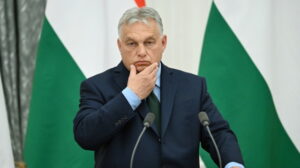Amidst growing concerns about water scarcity, the Greek government has devised a five-pillar plan aimed at addressing this critical issue. The most ambitious of these plans involves transferring water from the artificial Kremasta Lake by connecting it to the Evinos and Mornos reservoirs, which supply the Attica region. This major initiative is designed to secure water supplies for the region for decades.
Overview of the Crisis and Response Measures
In October 2022, Attica’s drinking water reserves stood at 1.1 billion cubic meters. However, by October 2023, projections estimate this number to drop below 700 million cubic meters. Despite this volume being sufficient for four more years under current drought conditions, the significant reduction in reserves demands urgent action.
The alarming water shortage has prompted an assessment of Greece’s water use and management. The first conclusion drawn from this review is that water waste remains a significant issue. This is not a new problem, as similar challenges were identified during the severe droughts of the 1990s. Solutions like desalination, which were proposed decades ago, especially for the islands, have been slowly implemented, leaving places like the Cyclades facing acute water shortages during peak tourist seasons.
Another major finding is that Greece continues to rely heavily on groundwater, with the agricultural sector using 85% of the country’s total water consumption. Despite calls for more sustainable farming practices, water-intensive crops continue to dominate.
Securing Water for Attica
To address the water scarcity in Attica, the Ministry of Environment has already activated emergency drilling operations in Mavrosouvala, with additional backup drills planned in the Boeotian Kifisos region for €2 million.
The centerpiece of the government’s plan is the project announced by Prime Minister Kyriakos Mitsotakis, which involves transferring water from Kremasta Lake to Attica by linking it to the Evinos and Mornos reservoirs. This project, designed to safeguard Attica’s water supply for the next 30 years, is currently in the early planning stages, with studies and tenders expected soon. The prime minister has stressed that while the project is complex, the need for swift action is clear, and it should be completed within 3-4 years.
Mitsotakis also highlighted that Kremasta Lake has four times the capacity of Attica’s current reservoirs, making it a vital resource for long-term water security.
Other Government Initiatives
In addition to the Kremasta project, other government measures include bolstering the Evinos reservoir from Kremasta Lake and reusing treated wastewater from Psyttalia for industrial use, irrigation, and replenishing the aquifers. The Ministry of Environment is also restructuring water providers, which include over 300 local water companies (mostly municipal), with plans to consolidate them to a quarter of their current number. The goal is to create more efficient and capable water management organizations.

Water providers in Greece face several challenges, including significant water losses in the supply network. In 2019, water losses ranged from 9.5% to 62%, with an average loss of 35.6%. To address these inefficiencies, the government is also expanding EYDAP (Athens Water Supply and Sewerage Company) to cover all of Attica and is considering extending its services to nearby regions such as Corinth, Boeotia, and Phocis, as well as strengthening EYATH’s (Thessaloniki Water Supply and Sewerage Company) presence in Thessaloniki and Chalkidiki.
For smaller islands, the government is launching EYDAP Nison (EYDAP Islands) to support areas with weaker water infrastructure, prioritizing projects in regions already suffering from water shortages, such as the Cyclades.
Controversy Over Water Pricing
The government’s announcement regarding changes to water pricing has sparked heated reactions. Minister of Environment Theodoros Skylakakis stated that the pricing structure will be revised, with costs adjusted based on consumption. Prime Minister Mitsotakis assured that there will be no significant increases, and water will remain affordable for low-consumption households. Price hikes, if any, will be capped at the rate of inflation.
The new pricing system, which is set to be implemented through a Joint Ministerial Decision, will allow providers to set rates subject to oversight by the Regulatory Authority for Energy and Water (RAAEY). The system will ensure affordable rates for basic water consumption, while heavier users will face higher charges.
Special provisions will be made for vulnerable households, multi-child families, and public social infrastructures, along with mandatory consumption metering three times a year.
The government’s comprehensive plan aims to stabilize Greece’s water supply amid growing environmental pressures and evolving consumption needs. However, challenges remain, especially in balancing the economic and environmental sustainability of water use across the country.
Ask me anything
Explore related questions





